![]()
![]()
€
the Euro sign (December 12, 1996)
Unicode (1990)
the resin identification code (1988)
the ISO 8859 standard (1985)
:-)
emoticons (1982)
Umberto Eco's Theory of Semiotics ((1975)
symbology (1970s)
awareness ribbons (1970s)
@
the use of the at sign (1971) was introduced by Ray Tomlinson. Email had started in 1965
the recycling symbol (1970)
the Vienna Convention on Road Signs and Signals (November 8, 1968)
Hervé Bazin's Plumons l'oiseau (1966)
hexadecimal (mid 1960s)
the Happy Human (1960s)
☺
the Smiley (1963)
ASCII (1963)
biohazard (1960s)
↵
Carriage Return (1960)
Vexillology (1957)
Jewish badge (1941-1945)
Charles W. Morris' Foundations of the Theory of Signs (1938)
the Hakenkreuz (1920-1945)
Hammer and sickle (1917)
Ferdinand de Saussure's Course in General Linguistics (1916)
Olympic rings (1913)
maritime signal flags (1901)
Iconography (late 19th century)
the Irony mark (late 19th century)
license plates (1890)
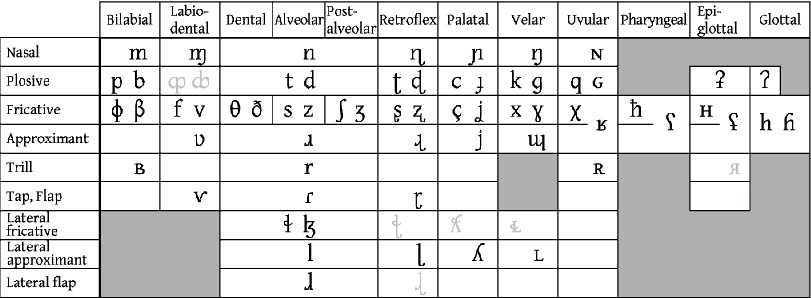
the International Phonetic Alphabet (1888)
Traffic lights (December 10, 1868)
the Red Cross (1864)
$
the dollar sign (1770s)
the all-seeing eye (18th century)
Σ
f(x) = sin(x) + x³
the f(x) function symbol (1734) was introduced by Leonhard Euler
" "
Quotation marks (1714) began to be used to quote direct speech
the maple leaf (18th century)
%
the percent sign (18th century)

modern musical symbols (late 17th century)
÷
the Division sign (1659) was first used by John Pell, an English diplomat and
mathematician, c.1630 and Johann Heinrich Rahn, a Swiss mathematician
∞
the Infinity symbol (1655) was first used by John Wallis, an English mathematician
x
the Multiplication sign (1631) was first used by William Oughtred, an English mathematician
<
the Less-than sign (1621) was first used by Thomas Harriot,
an English astronomer, mathematician, and physicist
>
the Greater-than sign (1621) was first used by Thomas Harriot,
an English astronomer, mathematician, and physicist
Bartholomaeus Pitiscus is credited with inventing the decimal point in his trigonometrical tables (1612)
it was subsequently accepted by John Napier in his logarithmic papers
a standardized sign language (1600s) began to be used in Italy
;
?
the Question mark (1587) was used by Sir Philip Sidney, an English poet, politician, and soldier
*
the Asterisk sign (1587) was used by Sir Philip Sidney, an English poet, politician, and soldier

the = sign was introduced (1557) by Robert Record
!
the Exclamation mark (1553) was first used by John Day, an English printer
,
Paolo Dagomari (1534) an Italian mathematician, first used
the comma to separate large figures into units of three
the radical symbol (1525)
Zinken (15th century)
123.45
the decimal point (1492) was first used by Francesco Pellos
Aldus Manutius (1490) started his printing press in Venice
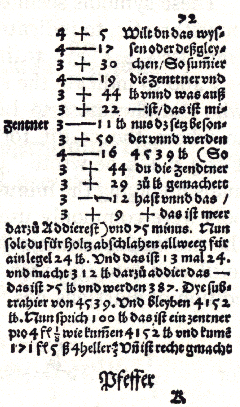
the arithmetic symbols for addition and subtraction (1489) were invented by Johannes Widmann
William Caxton (1475) printed the first book in english

Johann Gutenberg (re)invented the printing press (1455)
Papal coat of arms (13th century)

the Latin translation of al-Khwarizmi's book On the Calculation with Hindu Numerals (twelveth century)
introduced the use of the positional number system and the number zero to Europe
#
the number sign (Middle Ages)
-
the Hyphen (11th century)
Heraldry (late 11th century)
Signet rings (Middle Ages)
Coat of arms (Middle Ages)
§
¶
the Pilcrow (Middle Ages)
Interword separation (800)
0
the earliest known text to treat zero as a number in its own right (628) was Brahmagupta's
Brahma Sphuta Siddhanta (The Opening of the Universe), a work on astronomy and mathematics,
which gives methods to solve quadratic equations, sum series, and compute square roots
Star and crescent (330)
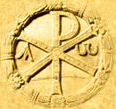
runes (150)
&
the Ampersand (1st centur ad)
:

Taiji (4th century bc)
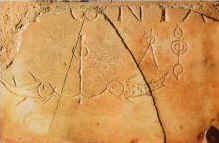
the Ichthys ()

♂
♀

the babylonian zodiac (ca. 500 bc)
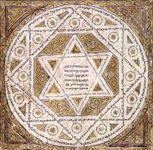
![]()
ˆ
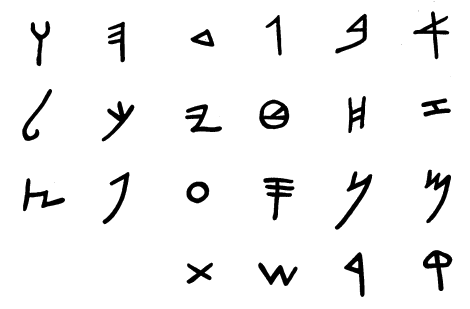
the Phoenician alphabet (1200 bc) is the predecessor of several other alphabets:
Hebrew, Arabic, Greek, Latin (via the Old Italic alphabet), and Cyrillic
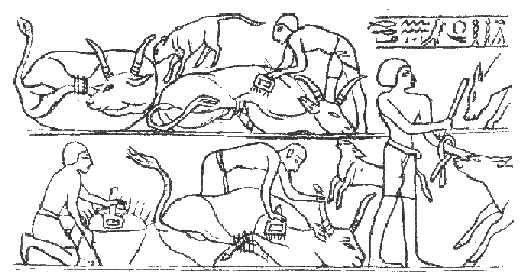
cuneiform script (late 4th millennium bc)
hieroglyphs (3200 bc)




Cave paintings (40,000 bc)